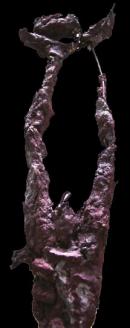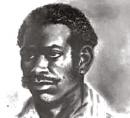- Because we need Aponte.
The monumental sculpture of José Antonio Aponte, which stands nine meters long, is cast in bronze and steel, facing the sea and in the territory of Peñas Altas, the same place where a black woodworker carpenter launched perhaps the first cry of freedom that wanted to be unknown for many decades in the history of Cuba.
“It's a sound sculpture. He wanted the slave to be recognized as a human being, because at that time they were considered animals, that is why it is his call against slavery, because this disgrace and human shame is still on the planet in another garment. It's not how they want to present it: a problem in one part of the world, but in the world. ”
The artist Alberto Lescay Merencio speaks exclusively for Arte por Excelencia, and explains that his work is entitled The Return of Aponte “because his spirit is alive in our land, and it is necessary to recognize its values in all its fullness, and the group of men who supported him at the time of the Haitian Revolution. ”
“It is another act of historical justice to what happened in 1811, one of the uprisings that the colonialists repressed with blood and fire, to the point that after the public execution, they exhibited the bleeding skull of Aponte in a metal cage in the market of Belascoaín, today Carlos III, as a ferocious lesson for black slaves”.
“It is transcendent to me to recognize that it is a request of the Cuban historians and intellectuals to the authorities of the country, who have raised this need for almost ten years, even in the last congresses of the Union of Writers and Artists of Cuba. We are about to see this dream come true”.
José Antonio Aponte was born in Havana. He was a cabinetmaker carpenter with a marked vocation for the plastic arts; his drawings were considered as subversive and used against him as proof of his rebellious and anti-slavery thinking.


























































